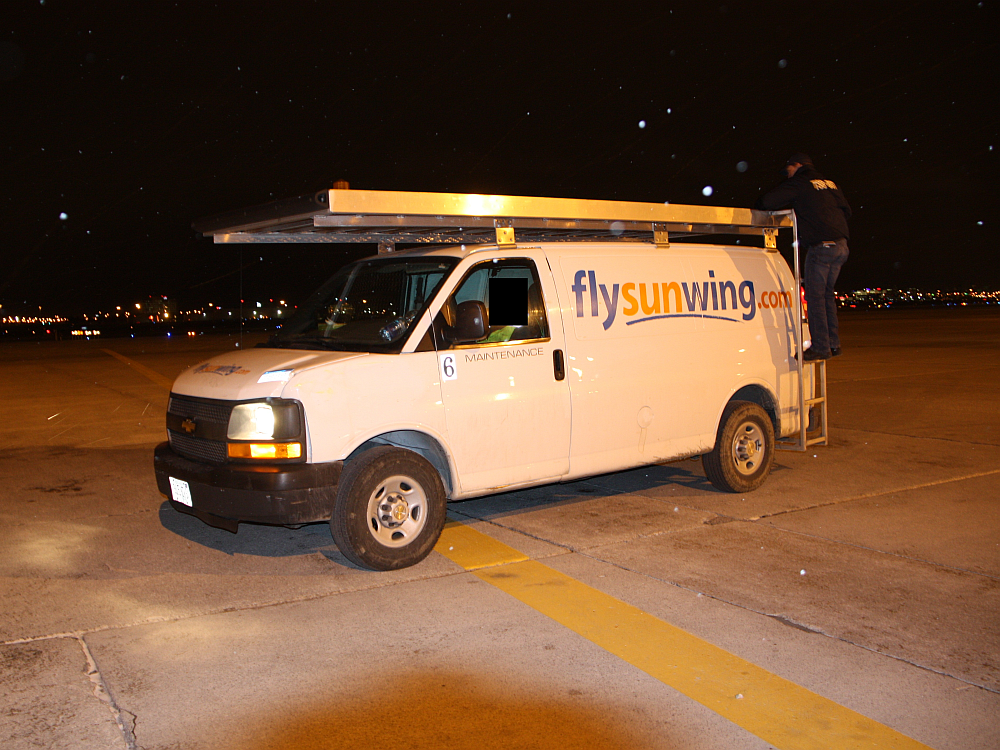Runway incursion and risk of collision
Sunwing Airlines vehicle and
Air Canada EMB190 C FLWH
Toronto Lester B. Pearson International Airport, Ontario
The occurrence
On Monday 11 March 2013, a Sunwing Airlines maintenance van was left unattended in drive at Gate Hotel 16. Unknown to the driver, the unmanned vehicle departed the gate area, heading southeast toward the threshold of Runway 24R, which was the current arrival runway. An Air Canada EMB190, operating as flight ACA178 inbound from Edmonton with 67 passengers onboard, was on approach to Runway 24R. Air Traffic Control noticed the vehicle on the airport surface detection equipment (ASDE) radar and twice instructed ACA178 on to pull up and go around. ACA178 did not recognize that the instruction was intended for them and did not see the vehicle. ACA178 continued the approach, passed directly overhead the vehicle, and landed without incident. The vehicle was located shortly afterwards, stuck in a grassed area southeast of taxiway D7.
Media materials
News release
Several factors led to a risk of collision for an aircraft landing at Toronto's Lester B. Pearson Airport in March 2013
Read the news release
Deployment notice
Transportation Safety Board of Canada deploys investigator to a runway incursion at the Toronto/Lester B. Pearson International Airport
The Transportation Safety Board of Canada (TSB) has deployed an investigator to gather information on a runway incursion at the Toronto/Lester B. Pearson International Airport.
On 11 March 2013 at 23:40 local time, a maintenance van inadvertently rolled onto an active runway and an Air Canada Embraer 190 narrowly missed it while landing. The TSB is assessing this occurrence.
Class of investigation
This is a class 3 investigation. These investigations analyze a small number of safety issues, and may result in recommendations. Class 3 investigations are generally completed within 450 days. For more information, see the Policy on Occurrence Classification.
TSB investigation process
There are 3 phases to a TSB investigation
- Field phase: a team of investigators examines the occurrence site and wreckage, interviews witnesses and collects pertinent information.
- Examination and analysis phase: the TSB reviews pertinent records, tests components of the wreckage in the lab, determines the sequence of events and identifies safety deficiencies. When safety deficiencies are suspected or confirmed, the TSB advises the appropriate authority without waiting until publication of the final report.
- Report phase: a confidential draft report is approved by the Board and sent to persons and corporations who are directly concerned by the report. They then have the opportunity to dispute or correct information they believe to be incorrect. The Board considers all representations before approving the final report, which is subsequently released to the public.
For more information, see our Investigation process page.
The TSB is an independent agency that investigates air, marine, pipeline, and rail transportation occurrences. Its sole aim is the advancement of transportation safety. It is not the function of the Board to assign fault or determine civil or criminal liability.
